On 11 July 2022 Prime Minister Narendra Modi unveiled a 6.5 m high, 9,500 kg bronze replica of the national emblem to be set atop the new Parliament building that is under construction in New Delhi.
There has been an outcry against this new piece of statuary on the grounds that it distorts rather than replicates the Sarnath Lion Capital which is the basis of India’s national emblem, and that its deviation from the original Ashokan artifact constitutes a breach of the law by the present government. The State Emblem of India (Prohibition of Improper Use) Act 2005 governs the reproduction and use of state symbols, and prohibits their improper use. It appears that there has indeed been a departure from the original state seal in the present instance. Are these changes deliberate and do they signify some shift in the meaning of the national emblem?
Symbols of substance
The symbols of the state selected and rendered during the Constituent Assembly debates, and at Independence, Partition and the promulgation of the Constitution between 1946 and 1950 were driven by the values, opinions and norms that dominated both the political climate and public discussion of the time. The “authors” of these principles, which were textually enshrined in the Constitution as well as represented formally via the national symbols, were Gandhi, Tagore, Nehru, Ambedkar, and their peers, some of them exerting influence posthumously, others actively, at the time of the creation of the new republic.
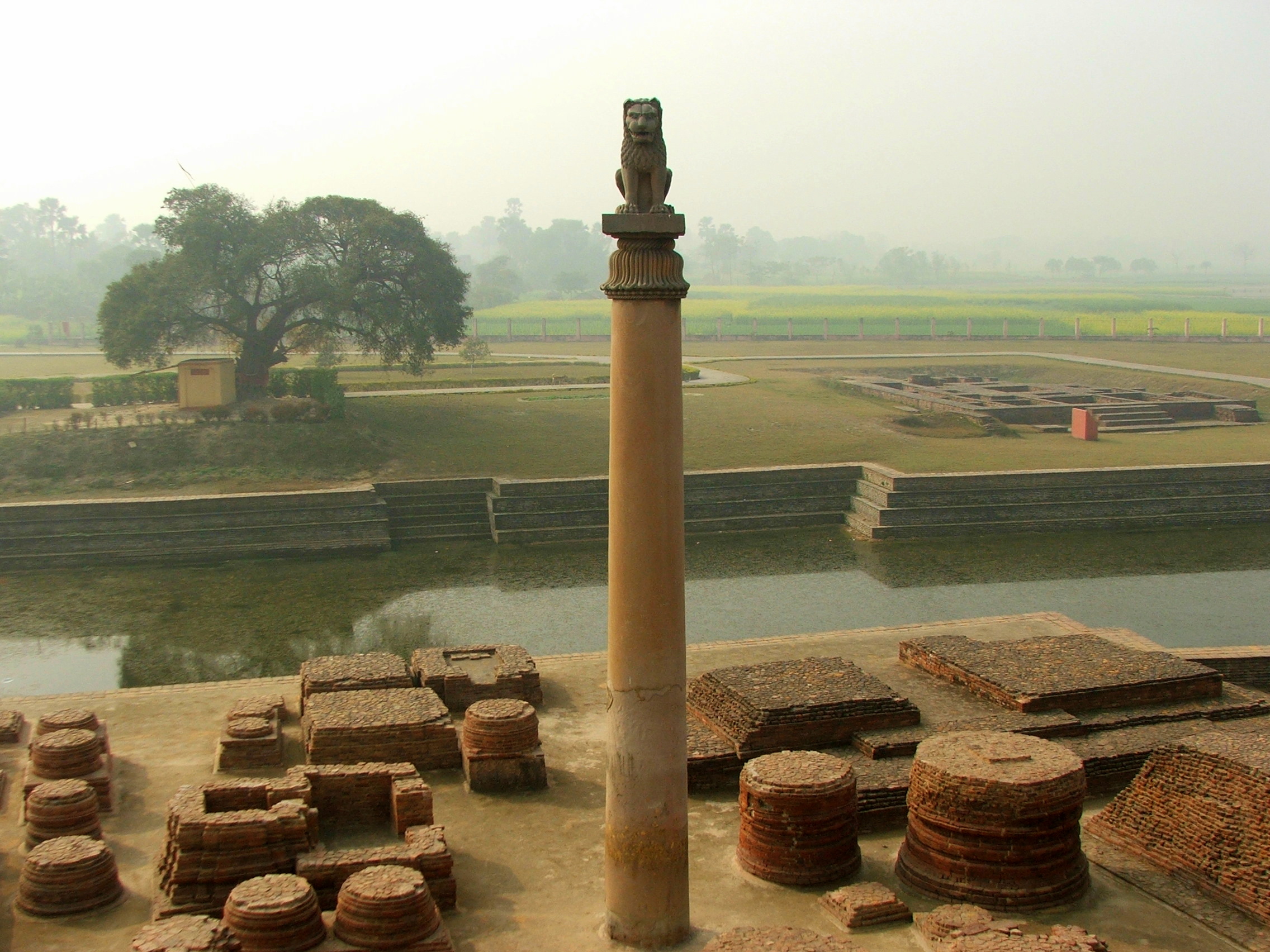
S. Radhakrishnan, Nandalal Bose, Jamini Roy, Rajendra Prasad, and several others in the political leadership as well as the arts (particularly the Santiniketan group) were involved in the debate, the design process, and the business of interpreting and disseminating the meaning of the ideas behind these symbols that were to be communicated to the people. In a recent article, Laila Tyabji has recounted the direct involvement of her parents, Badruddin and Suraiya Tyabji in making of both the national flag and the national emblem, at the behest of Nehru himself. They functioned partly informally, at home, and partly through the mechanism of a duly constituted Flag Committee. From their daughter’s account three quarters of a century later, it seems that the main factor influencing their choices was the pressure of time before the fast-approaching date of Independence.
Ashoka’s eschewal of violent conquest after his victory in the war of Kalinga, his promise to protect all sects and all species in his domain, and his zeal to spread the messages of the Buddha...were values that provided benchmarks for the new republic...
The lion capitals and pillar edicts of Ashoka exercise a panoptic function and radially project a circumference of sovereignty. The lines of sight of the four lions facing the cardinal directions, and the words of Ashoka carved on rocks and pillars placed throughout the subcontinent create a space – both territorial and imagined – that is permeated by the emperor’s sovereign power and suffused with his devotion to the Buddha and the Dhamma. The Indian nation-state being fashioned by Nehru, Ambedkar, and the Constituent Assembly sought to model itself on this ancient template.
Ashoka’s eschewal of violent conquest after his victory in the war of Kalinga, his promise to protect all sects and all species in his domain, and his zeal to spread the messages of the Buddha – dhamma (righteousness), ahimsa (non-violence), karuna (compassion), maitri (goodwill), bandhuta (fraternity), samata (equanimity / equality) all across the land and through his missions to other lands – were values that provided benchmarks for the new republic that were at once appealing to the historical imagination and attractive for the political imagination of modern India.
I have argued (Vajpeyi 2012) that Ashoka, Mauryan history, early Buddhism, and the vision of a “Greater India” extending beyond the subcontinent were all inspirations for the founders. Some of these ideas appealed across the Congress / Hindutva divide.
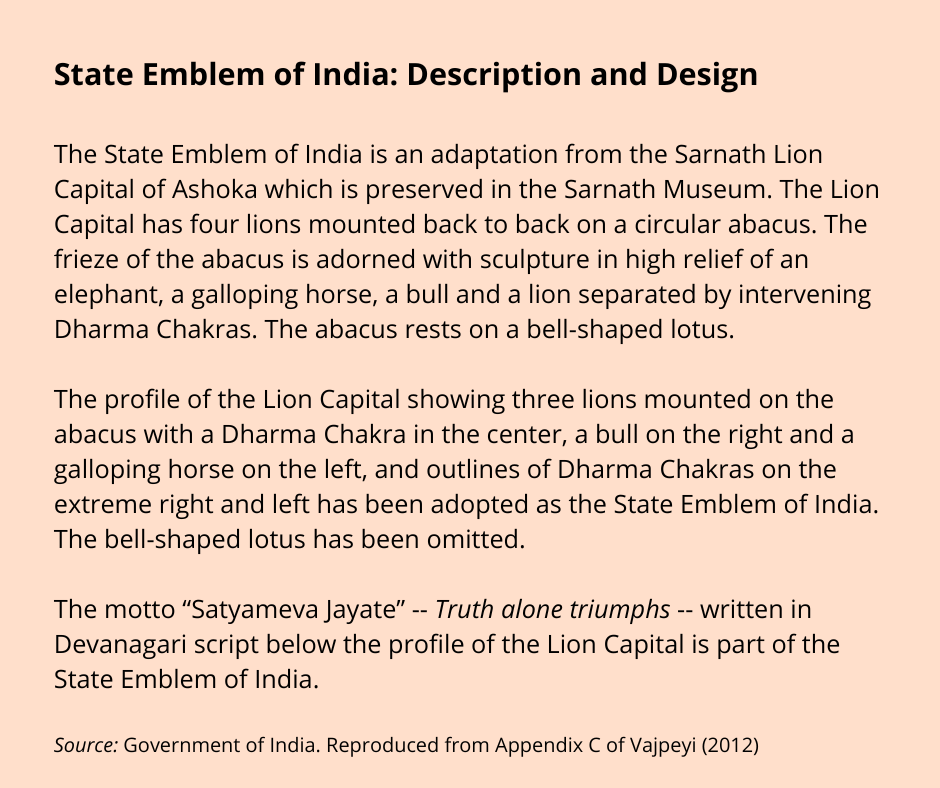
In anti-colonial and nationalist-era Bengal and Maharashtra, especially, the repertoire of political symbols was shared across the ideological spectrum, with religious, historical and cultural elements freely used to construct signify India’s ‘Self’ against the British ‘Other’. Abanindranath Tagore’s Banga Mata / Bharat Mata, Aurobindo’s ‘Akhand Bharat’, Bankim Chandra Chatterjee’s Vande Mataram, Rabindranath Tagore’s poetry, lyrics and music, Chhatrapati Shivaji’s ‘Hindavi Swarajya’ via Tilak, all were absorbed by the Hindu Right as it emerged and consolidated itself throughout the 20th century. Rabindranath Tagore’s poems and tunes were versatile enough to yield, directly or indirectly, the anthems of three separate nations: India (1947), Sri Lanka (1949), and Bangladesh (1971).
During the freedom struggle. Muslim and Sikh leaders in the Congress, as well as Ambedkar, all made peace, to different extents uneasy or enthusiastic, with the primarily Hindu character of the signs and symbols of Indian nationalism.
Sumathi Ramaswmay (2010), Arundhati Virmani (2008), Srirupa Roy (2007) and Christopher Pinney (2004), among others, have looked at maps of India (undivided and post-Partition), deities representing the motherland (especially figures of the goddess), the national tricolour (along with various sectarian flags of a political-cultural nature), the national anthem (along with other patriotic songs), the Republic Day parade (instituted after the promulgation of the Constitution in January 1950), photographs, films, posters and calendar art—in short, the full range of visual / audio-visual / musical / filmic icons deployed to rally the public during the freedom struggle. Muslim and Sikh leaders in the Congress, as well as Ambedkar, all made peace, to different extents uneasy or enthusiastic, with the primarily Hindu character of the signs and symbols of Indian nationalism.
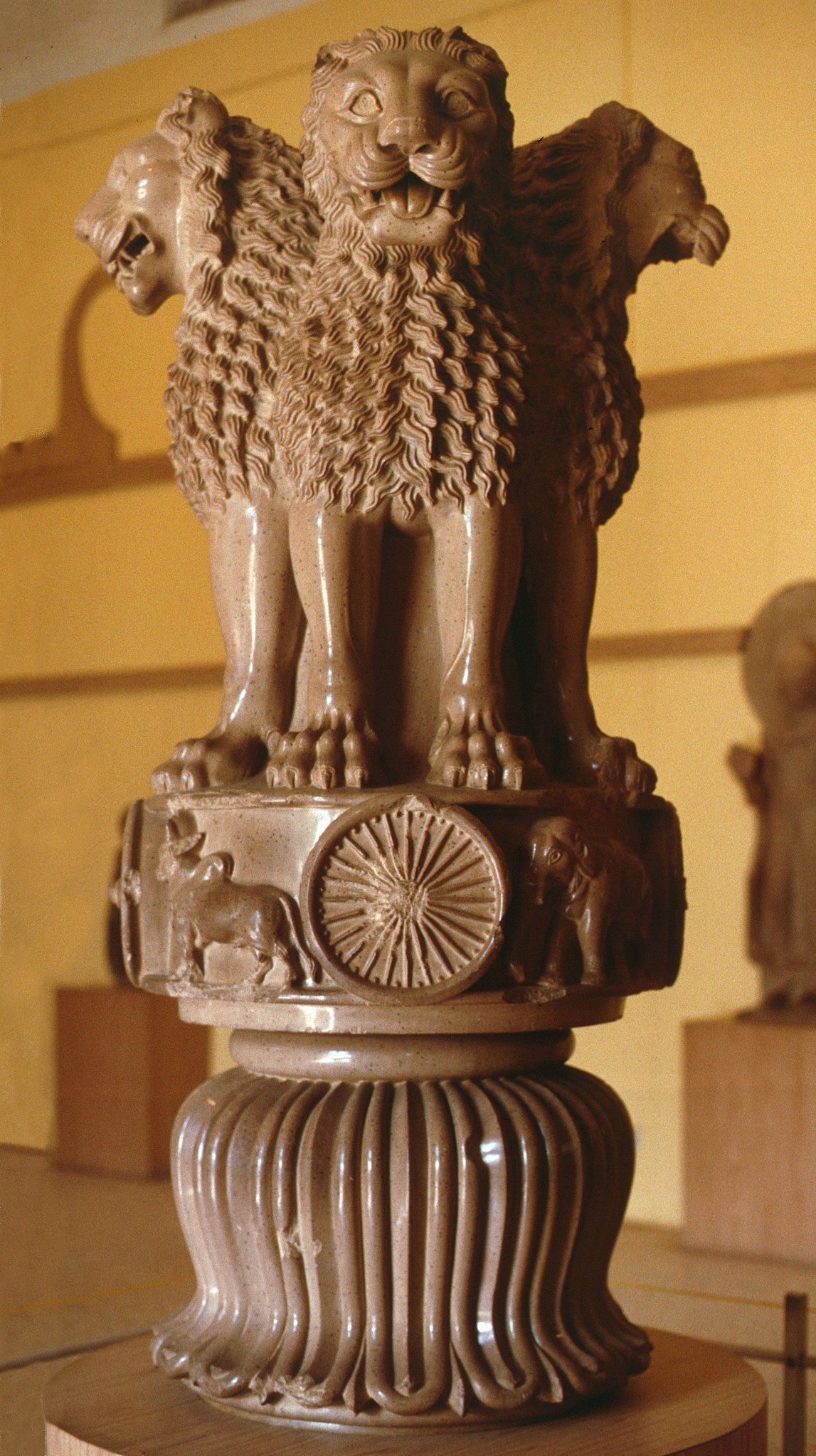
But both political ideology and political iconography have become more polarised in the regime of the BJP, especially in its current avatar under Narendra Modi, with the strong assertion of majoritarian, chauvinist, and exclusivist Hindutva. It is now well-nigh impossible to represent secular India and the Hindu Rashtra through a common visual grammar. The present dispensation wants to challenge the foundational ideas of the republic: swaraj, swadeshi, ahimsa, pacifism, benign sovereignty, coexistence, tolerance, welfare, unity in diversity, social justice, and fraternity.
Since Hindutva is avowedly opposed to the founding ideals, seeing them as a product of Gandhian non-violence, Congress nationalism, and Nehruvian secularism, the current government is reshaping many of the associated institutions and symbols: the Parliament building, the Central Vista, the Lion Capital, and one day, possibly, the very text of the Constitution itself. Looking at the relationship between national symbols, state architecture, urban design, monuments, mausoleums and memorials, as well as the arts (painting, sculpture, music, dance, theatre, photography, film) in Europe under Mussolini, Hitler, and Stalin between 1930 and 1945, it becomes clear at once how authoritarianism rests as much on ‘soft’ as on ‘hard’ power (Ades et al, 1995).
The present dispensation wants to challenge the foundational ideas of the republic: ‘swaraj’, ‘swadeshi’, ‘ahimsa’, pacifism, benign sovereignty, coexistence, tolerance...fraternity.
While the Sangh has already usurped and supplanted prominent symbols of the Hindu religion, notably Rama, Hanuman, Ayodhya, and Kashi, they are now targeting salient elements of India’s civic religion as well, starting with the Sabarmati Ashram, Gandhi’s Dandi March sketch, Sardar Patel’s statue, the figure of Ambedkar, Tagore’s flowing beard and robes, and now moving more centripetally to the Sarnath pillar and the dhamma chakra.
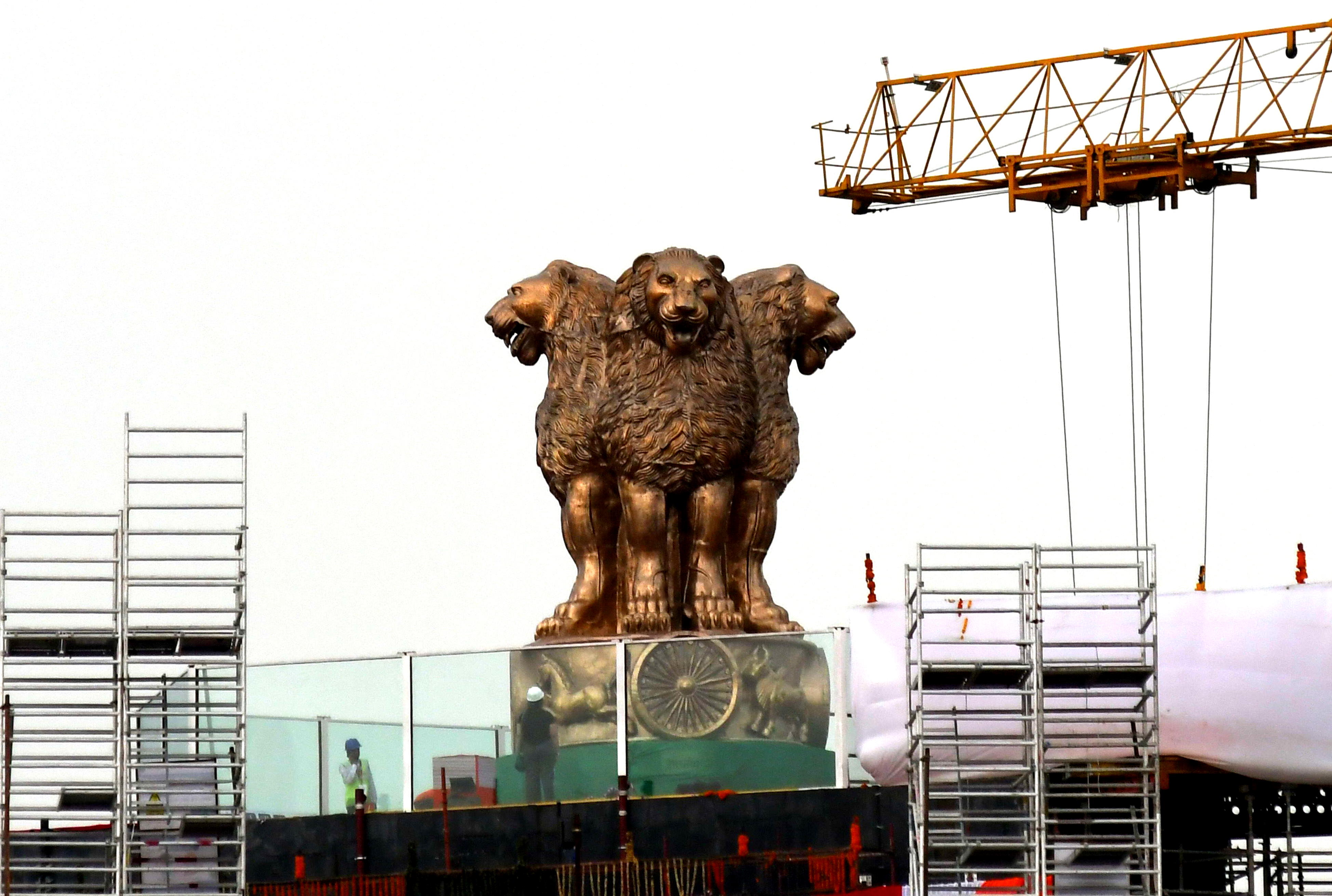
The implications are clear: they seek to either appropriate or replace everything associated with the national movement and the creation of the Indian Republic. The slogans and songs that come out of our modern history have not been spared: “Jai Hind” is increasingly replaced with “Bharat Mata ki Jai” and “Vande Mataram”, and there is a marked bid to push out Allama Iqbal’s poetry like Saare jahaan se accha from the patriotic repertoire.
While the Sangh has already usurped and supplanted prominent symbols of the Hindu religion, notably Rama, Hanuman, Ayodhya and Kashi, they are now targeting salient elements of India’s civic religion...
Musician TM Krishna has argued that the attempted ‘saffronisation’ of national symbols by the Hindu Right has to be countered not only with a reassertion of secular values, but also the reclaiming of cultural resources that are increasingly being given a communal meaning. To this end, for example, he recently sang the Preamble to the Indian Constitution in Sanskrit (Jawahar Bhawan New Delhi, concert for SAHMAT, 30 July 2022), saying very explicitly that we need to “reclaim Sanskrit”, which is as much an Indian language as any other, and to which Hindus do not have any exclusive right in Independent India.
Sovereignty ancient and modern
Let us focus on the actual iconographic modification made in the new national emblem sculpture. The main differences seem to be in the bulk, musculature, and ferocity of the lions relative to their Mauryan ancestors (via Santiniketan), exaggerating a threatening stance and presenting a bloodthirsty aspect. According to commentators like Reshmi Dasgupta and Sanjeev Sanyal, this show of prowess is the whole point. But what sort of prowess? Is it protective or aggressive? Is it meant to symbolise a state that stands guard over its own people or a state that attacks other states? Is the sovereign power of India, which has thus far sought to be ethical, now transforming into a more adversarial one?
Lions are everywhere in the conventions of signifying power, from Narasimha among the avatars of Vishnu to Aslan, a regal lion shared across the Greco-Roman world, Christianity and Islam, to the winged lion of St. Mark the Evangelist seen in Venice, to the regalia of a number of European states (lions and eagles are used so often to symbolise majesty, strength, bravery, kingship, and valor). Siddhartha Gautama and Padmasambhava, the first Buddha and second Buddha respectively, both had the title Shakya Simha (Lion of the Shakya Tribe).
Jesus Christ after the Resurrection is a Lion; Imam Ali is Sher-e-Yazdaan (Persian) and Asadullah (Arabic), the Lion of God. Ancient Egyptians, Assyrians, Babylonians, Greeks and Achaemenids all carved lions or lion-men; Mughals and Ottomans depicted lion-hunts; Sikhs and Rajputs, as warriors, routinely used “Simha” or “Singh” as surnames. The Newari kings of Bhaktapur in Nepal had ornate leonine statues in metal and stone guarding all their palaces, temples, squares and city gates.
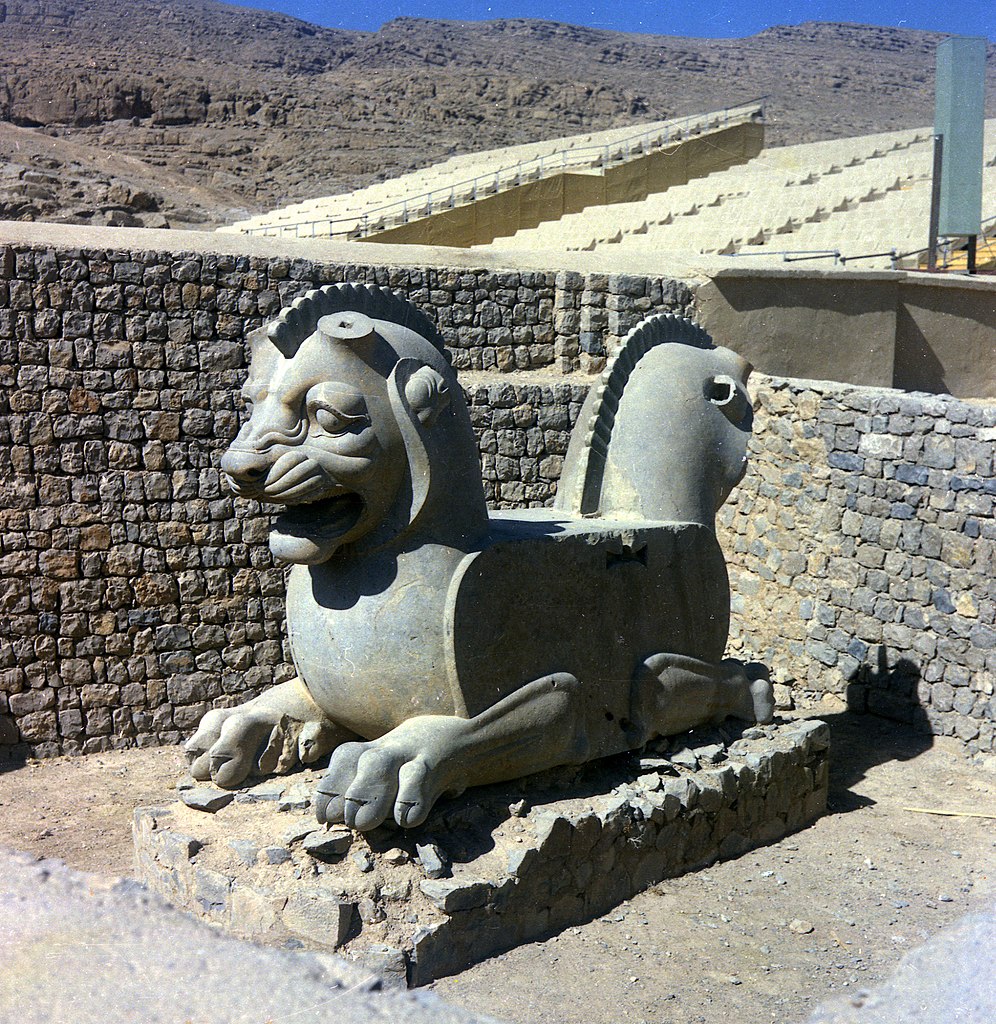
Closer to our time, Lala Lajpat Rai was called “Sher-e-Punjab” and Sheikh Abdullah was “Sher-e-Kashmir”. As Sumathi Ramaswamy documents, in the nationalist period and thereafter, the deified figure of Mother India or Bharat Mata was sometimes depicted on posters, calendars and other types of pop art as armed with a trident and riding a lion.
I have written about Abanindranath Tagore’s pictorial engagement with the Taj Mahal and the Mughals, particularly Shah Jahan (as also Aurangzeb and Dara Shikoh), as well as his original conception and delicate depiction of Bharat Mata; Nehru’s fascination with Emperor Ashoka, Ambedkar’s with Gautama Buddha, and S. Radhakrishnan’s influence in selecting the national motto Satyameva jayate that is inscribed just below the national emblem, taken from a verse in the Muṇḍaka Upaniṣad (3:1:6) (Vajpeyi 2012, chapters 3–5).
The question is not whether the Sarnath Lion Capital should or should not be the national emblem. The question is: What is the character of political sovereignty that the Indian nation-state seeks to project after 75 years of independence? And this question far exceeds mere symbolic depiction: it goes to the heart of what our country stands for.
Ananya Vajpeyi is an intellectual historian and political theorist at the Centre for the Study of Developing Societies, New Delhi. She is the author of Righteous Republic: The Political Foundations of Modern India (Harvard University Press, 2012).









